al-Azimi
Al Muwassal 'ala al-Asl al-Mu'assal by al-Azimi
Aliases
Aliases Arabic al-Azimi أبوعبدالله العظيمي Abū ʿAbd Allāh Muḥammad ibn ʿAlī ibn Muḥammad al-Tanūkhī Background and Biography Background and Biography
Excerpts English from Cahen (1938)
A.H. 508
The Egyptians had conquered the city of Tyre after an intensive siege, by land and sea. Taj al-Dawla was then killed in the Aleppo Citadel and later his brother Sultan Shah too in Rabi` al-Akhir1. A great earthquake struck the Levant bringing about the destruction of citadels, with an enraged atmosphere before the quake. Kurd, the ruler of Hama, died. Lulu the servant had captured Ibn al-Sultan, the wazir2, and returned the wizara to Ibn al-Mawsil. Khair Khan captured Najm al-Din Ibn Artuq. Atabeg Tughtekin of Damascus took over the towers of Raphanea from Shams al-Khawass. And Shams al-Nahar passed away.
- from Cahen (1938:382-383)
- translated from Arabic to English by Ismail Afqir
Footnotes from Ismail Afqir1 Rabiʽ al-Thani (Arabic: رَبِيع ٱلثَّانِي, romanized: Rabīʿ ath-Thānī, lit. 'The second Rabi', also known as Rabi' al-Akhirah (Arabic: رَبِيع ٱلْآخِرَة, romanized: Rabi' al-ʾĀkhirah, lit. 'The final Rabi'), Rabiʽ al-Akhir (Arabic: رَبِيع ٱلْآخِر, romanized: Rabīʿ al-ʾĀkhir), or Rabi' II is the fourth month of the Islamic calendar. The name Rabī' al-Thani means "the second spring" in Arabic, referring to its position in the pre-Islamic Arabian calendar. Rabi' al-Thani - Wikipedia
2 The term wazīr is traditionally used to denote the position of vizier who was the state secretary, the aide, helper and councilor of the caliph/sultan of the highest rank in the administrative apparatus (of for example the ʿAbbāsid Caliphate and its successor states (see, Būyids, Fāṭimids, Ayyūbids and Salǧūqs)). See Sirov (2015) The Concept of Ministry in the Arabic Political Tradition Its origin, development, and linguistic reflectionFootnotes - Cahen (1938)
English1 Other sources and al-'Azimi himself later place this fact in 516: there may be confusion with the sending of a fleet in 507 (cf. Kal. 189).
2 Cf. Kal. 190 (more summary), I.F. 81 ve and seq., Kamal 606-607.
3 No other source gives the last detail.
4 The Bustân places this fact in 506. I. F. 88 ve in 509.
5 Cf. I. F. 82 re and Kamâl 607.
6 Cf. Kal. 191.
7 Different story in Kamâl 610 (in 509).
8 None of the dead of this year are known to have borne this title.French1 Les autres sources et al-'Azimi lui-même plus loin placent ce fait en 516: il peut y avoir confusion avec l'envoi d'une flotte en 507 (cf. Kal. 189).
2 Cf. Kal. 190 (plus sommaire), I.F. 81 ve et suiv., Kamal 606-607.
3 Aucune autre source ne donne le dernier détail.
4 Le Bustân place ce fait en 5o6. I. F. 88 ve en 509.
5 Cf. I. F. 82 re et Kamâl 607.
6 Cf. Kal. 191.
7 Récit différent dans Kamâl 610 (en 509).
8 Aucun des morts de cette année n'est connu pour avoir porté ce titre.A.H. 509
The eastern armies crossed the Euphrates, marching downward through Wadi Baz`ah and then (Tell) Danith3. As the troops rose up to handle a matter, firmly and without hesitation, the Franks4 attacked and plundered them. The army then returned to the east. The sun was eclipsed during the constellation of Leo in Safar5. Ahmadil was killed in the Sultan’s palace in Baghdad in Muharram6. Munyah Ibn Awda left Palmyra at the end of Ramadan. (70) Barsaq Ibn Barsaq7 died. And Muhadhdhab Al Malik Abu al-Husayn Ibn Munir al-Atrablusi8 praised Taj al-Muluk9 in Damascus, saying, "The desired sky has flown according to your will." [Wafir]10. And the Sultan's messenger had entered and returned to Damascus to attack the suburb of Homs himself. And the Al-Jisr hospital (or as in the original text Bimaristan11) was built in Mosul.
- from Cahen (1938:383)
- translated from Arabic to English by Ismail Afqir
Footnotes from Ismail Afqir3 See the article about Battle of Sarmin or the Battle of Tell Danith (or Danith Hill). Battle of Sarmin - Wikipedia
4 Historically, Muslim writers described European Christian Crusaders as al-Faranj or Alfranj (الفرنج) and Firinjīyah (الفرنجيّة) in Arabic. This word comes from the name of the Franks and can be seen in the Arab history text Al-Kamil fi al-Tarikh by Ali ibn al-Athir.
5 Safar (صَفَر) is the second month of the Islamic lunar calendar. The name "Safar" comes from the Arabic word meaning "empty" or "void," as it was believed that pre-Islamic Arabs would leave their homes during this month, leaving their houses empty. The Islamic lunar calendar, also known as the Hijri calendar, is used to determine the dates of religious events and observances in Islam. Each month begins with the sighting of the new moon, and Safar follows the first month, Muharram.
6 Ahmadil ibn Ibrahim ibn Wahsudan al-Rawadi was killed on the first day of Muharram in the year 510 AH (1116 AD) in the house of Sultan Muhammad in Baghdad. Ahmadil was one of the Kurdish princes and the ruler of Maragha, and he attended with a group of princes the Atabeg Tughtekin, the ruler of Damascus, to meet the Sultan. During the meeting, Ahmadil was attacked by a complainant, and died as a result of the injuries he sustained. https://dorar.net/history/event/1840
7 Bursuk II aka Bursuk ibn Bursuq- Wikipedia
8 Abu al-Husayn Muhadhdhab al-Din Ahmad ibn Munir ibn Ahmad al-Tarabulsi, known as Ibn Munir al-Tarabulsi, was a poet and linguist from Tripoli, Syria, born in 473 AH (1080 AD) and died in 548 AH (1153 AD) in Aleppo, Syria. He was known for his sad poetry and satire, and wrote many poems that dealt with various topics, including satire and praise. ابن منير الطرابلسي - ويكيبيديا
9 Taj al-Muluk Buri (Taj al-Muluk Buri) was Atabak of Damascus from 1128 to 1132. His father was Zahir al-Din Taghtkin and Buri ruled after him. Bori was known for his military leadership and fighting against the Crusaders, and he died in 1132 due to a stab wound. Taj al-Muluk Buri - Wikipedia
10 The term ‘Wafir’ in this context refers to a type of poetic meter in Arabic literature, called “Bahr al-Wafer”, which is one of the traditional meters of Arabic poetry.
11 The word "Bimaristan" is a Persian word meaning "hospital" or "home of the sick". This word was used in many Islamic countries in the Middle Ages to refer to health institutions concerned with the treatment and care of the sick. Bimaristans provided advanced medical services at that time, including physical therapy, psychological therapy, and surgery.Footnotes - Cahen (1938)
English1. I.F. 83 ve-85 ve, I. A. 356-358, Kamâl 608-610 does not speak of a station at Buzà'a.
2 Cf. Kal. 198; it is in reality muharram 510.
3 No other source.
4 I. A. 358 the milk dying in 510, but alludes to him in 509 (p. 360) as already dead.
5 No other source.
6 The beginning can hardly be anything more than a distorted allusion to Tugtakin, of whom the sequel obviously speaks (cf. Kal.).
7 No other source.French1. I.F. 83 ve-85 ve, I. A. 356-358, Kamâl 608-610 ne parle pas de station à Buzà'a.
2 Cf. Kal. 198; il s'agit en réalité muharram 510.
3 Pas d'autre source.
4 I. A. 358 le lait mourir en 510, mais fait allusion à lui en 509 (p. 360) comme déjà mort.
5 Pas d'autre source.
6 Le début ne peut guère être qu'une allusion déformée à Tugtakin, dont la suite parle évidemment (cf. Kal.).
7 Pas d'autre source.A.H. 510
Lulu the servant went out to visit Saffin, and the Washaqiya killed him at the castle of Nadir, and the Atabeg of Aleppo, Yarqtash the servant, took over ...
- from Cahen (1938:383)
- translated from Arabic to English by Ismail Afqir
- only the part on p. 383 was translated
Footnotes - Cahen (1938)
English1 Cf. Kal. 198-199, I.F. 1010 re, I.A. 372. Usak is a traditional word synonymous with Gulam.
French1 Cf. Kal. 198-199, I.F. 1010 re, I.A. 372.Usak est un mot ture synonyme de Gulam.
A.H. 512
Al-Mustazhir, Caliph of Baghdad, died and his son Al-Mustarshdir too. Whose brother Abu Al- Hussein had fled to Dubays, and was later returned to Al-Rahba and imprisoned until his death. Baghdad was burned down. The Joscelin Atabeg defeated Damascus with a troop. Which had stayed with the Frankish armies for a month before diverging paths. Rojal, the ruler of Antakya, conquered the fortress of Azaz during the month of Ramadan. The Franks conquered the fortress of Al-Sun, in which they managed to kill Mani’ bin Atir Al-Numayri. Before Muqallid bin Sharaf Al-Dawla and King Takash had sought their protection. Another account states that the Roman king died in this year. The people chanted a slogan in the name of Najm Al-Din bin Artuq, which moved Ibn Al-Khashshab to long for him. He then returned with the Artuqid armies and descended to the south of Aleppo in the year thirteen. Sa’id bin Badi’ and his two sons were killed in the fortress of Dosar. Swarms of locusts devoured the crops of Sham and the Arabian Peninsula, resulted in inflation. The Franks conquered the fortress of Tell al-Firaq, taking it from the hands of Zengi bin Qarajah al-Hajji, the ruler of Homs. Leading people on to Yemen. The Muslims were defeated in Wadi al-Maqtul. Mari bin Rabi’ah defeated the Franks in a glorious battle.
- from Cahen (1938:385-386)
- translated from Arabic to English by Ismail Afqir
Footnotes - Cahen (1938)
English1 Cf. Kal. 200.
2 I. J. 446.
3 No other source (does I. A. 381 refer to the same fact?).
Perhaps [arabic text] should be read for [arabic text].
4 I.F. 138 re, Kamal 615.
5 Cf. I.F. 120 ve, I.A. 383.
6 Cf. I.F. 137 ve, 138 re.
7 This is actually in 508.
8 I do not know of any source giving this date.
9 Cf. I.F. 121 ve, 138 re.
10 No other source.
11 The only other source is the Chronicle published by Zetterstéen, Beitrâge zur Geschichte der Mamluken, p. 243.
12 No other source (unless there is confusion with the year 506, cf. Kal.).
13 No other source.French1 Cf. Kal. 200.
2 I. J. 446.
3 Pas d'autre source (I. A. 381 se rapporte-t-il au même fait?).
Peut-étre faut-il lire [arabic text] pour [arabic text].
4 I.F. 138 re, Kamal 615.
5 Cf. I.F. 120 ve, I.A. 383.
6 Cf. I.F. 137 ve, 138 re.
7 Cela en réalité en 5o8.
8 Je ne connais pas de source donnant cette date.
9 Cf. I.F. 121 ve, 138 re.
10 Pas d'autre source.
11 Unique autre source, la Chronique publiée par Zetterstéen, Beitrâge zur Geschichte der Mamluken, p. 243.
12 Pas d'autre source (à moins d'une confusion avec l'an 5o6, cf. Kal.).
13 Pas d'autre source.Arabic from Cahen (1938)
- from Cahen (1938:383-389)
- pages 509-515 in Arabic numerals
- Cahen (1938:437 n.7) has the following footnote (7) for Page 512
This is actually in 508 (Cela en realite en 508)where 508 may refer to A.H. 508 (7 June 1114 CE to 26 May 1115 CE)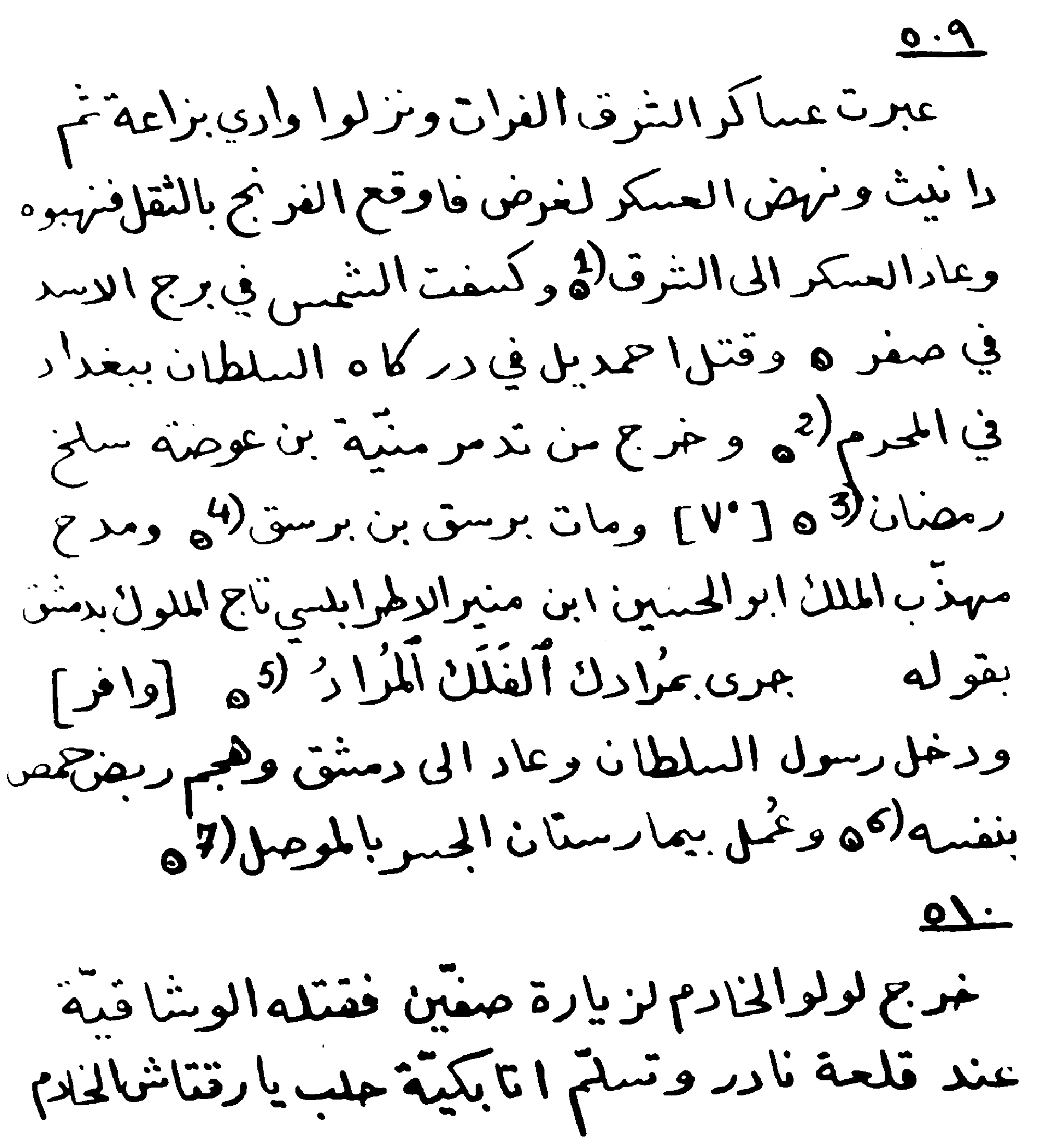
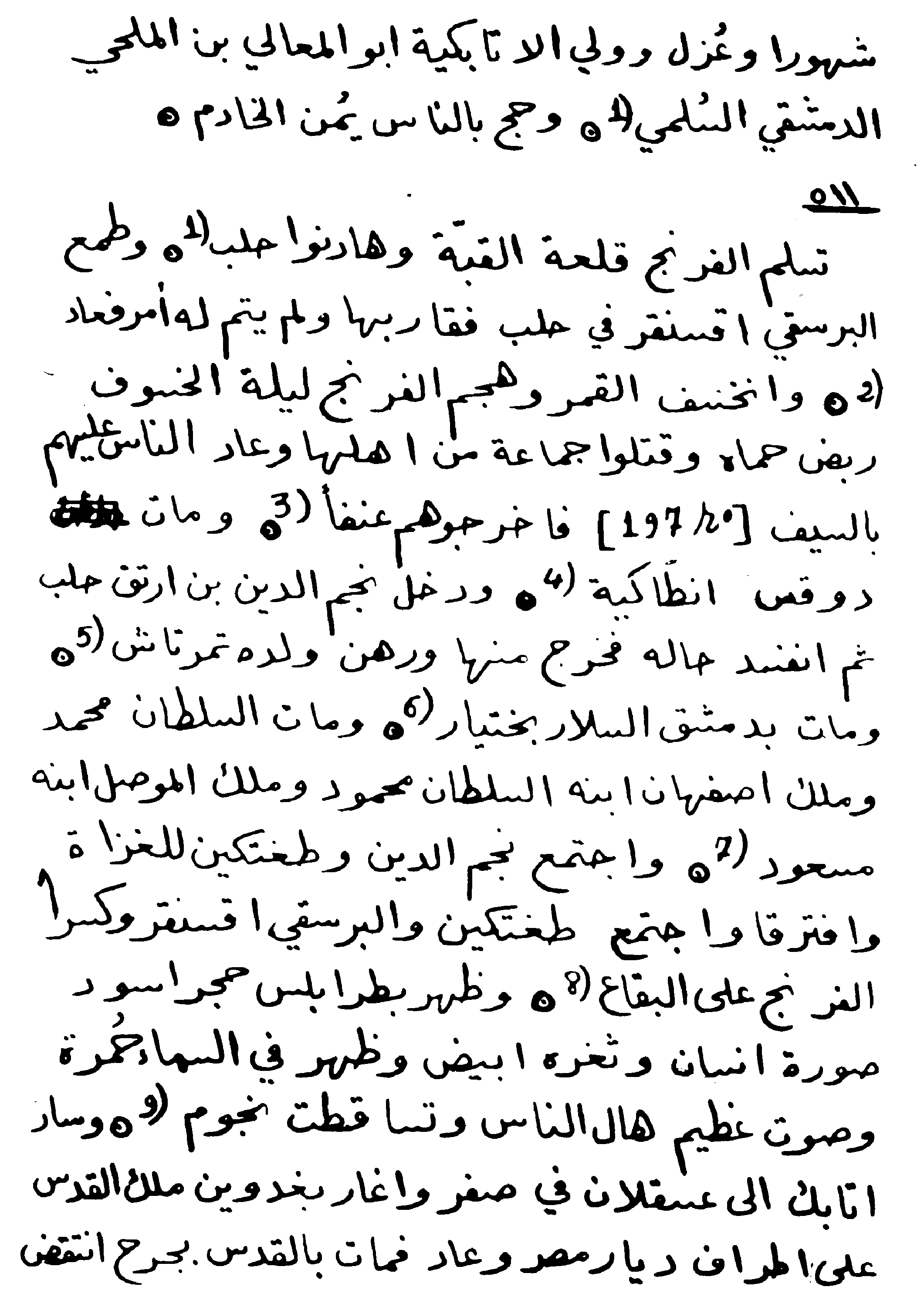
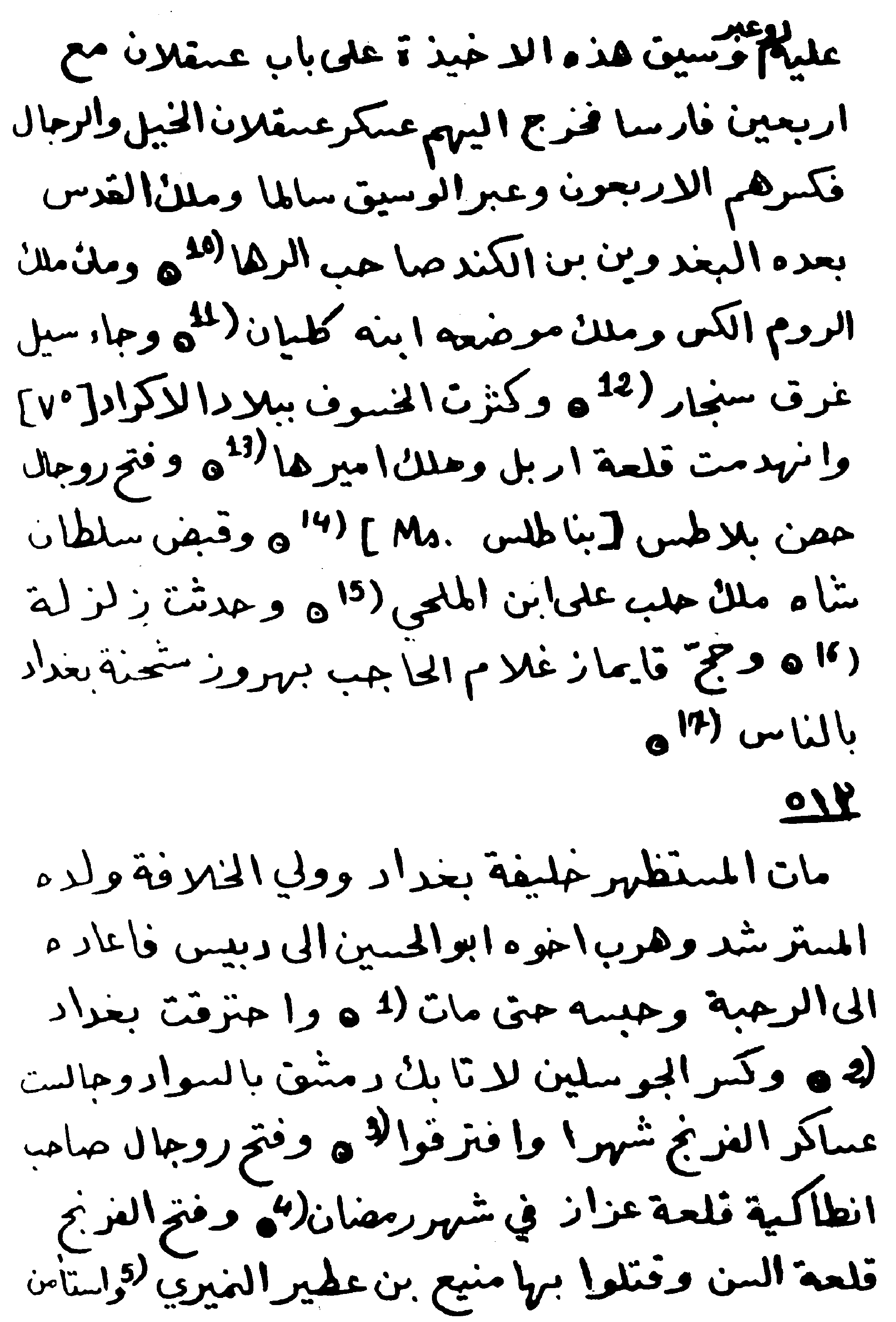
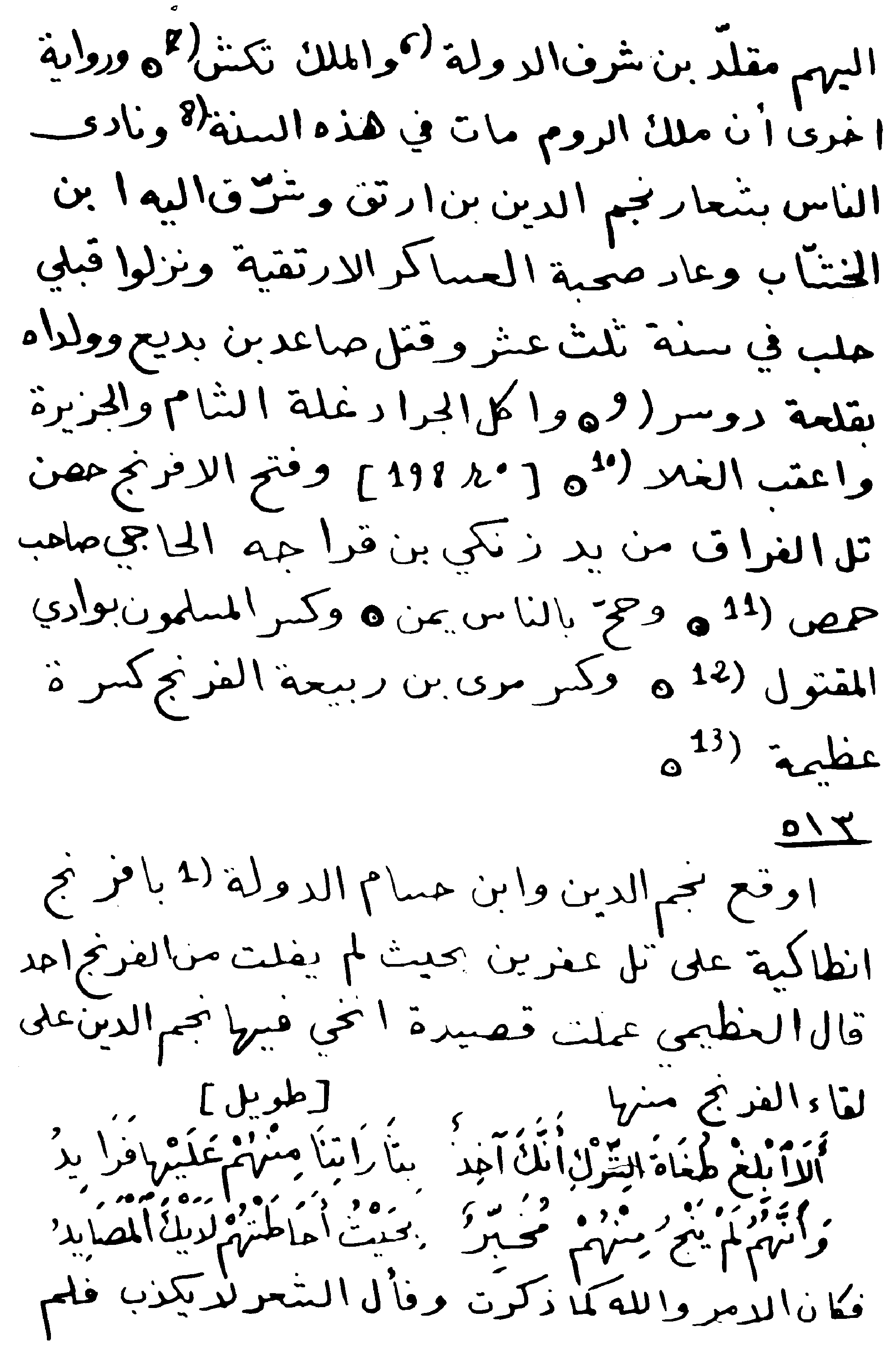
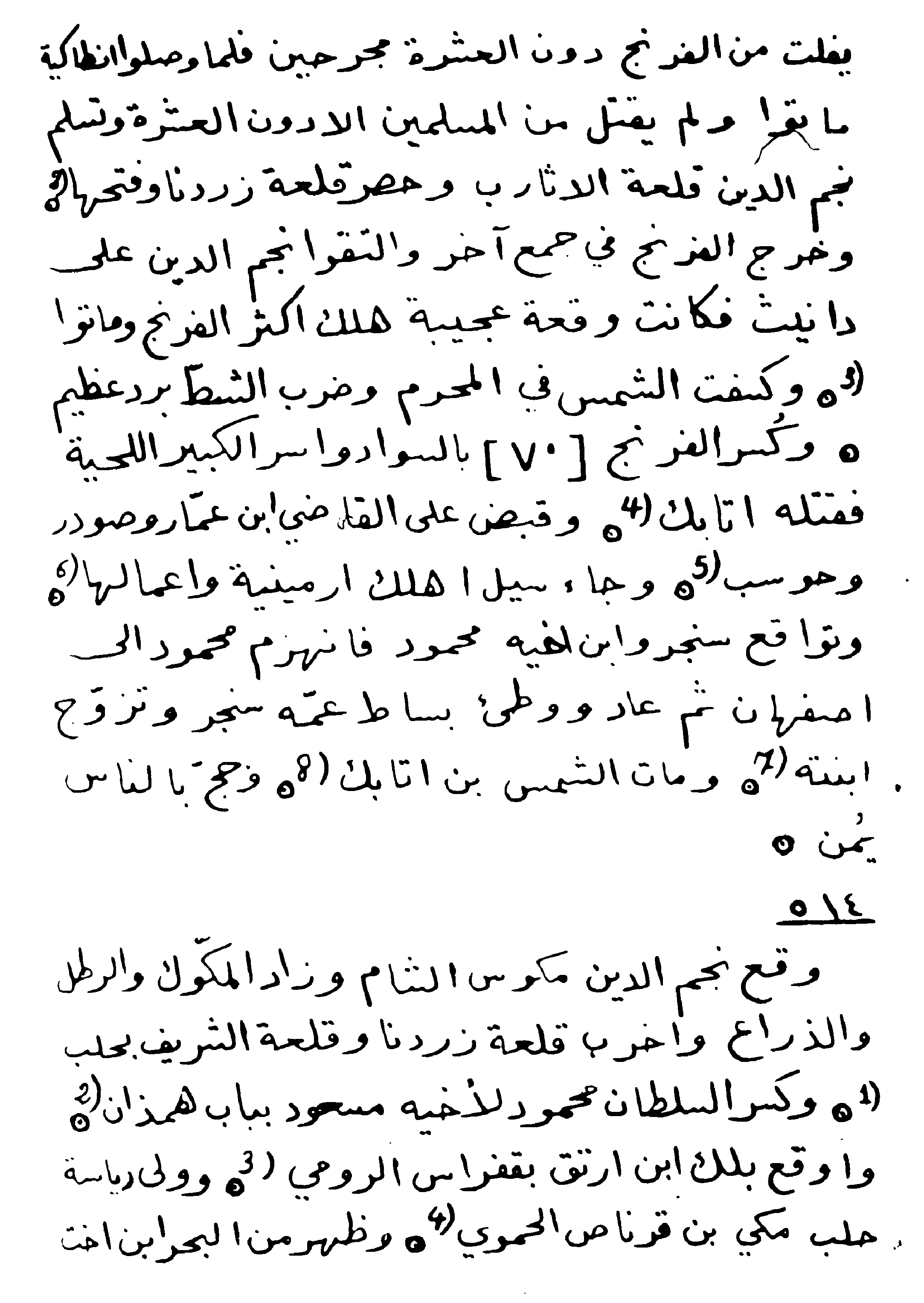
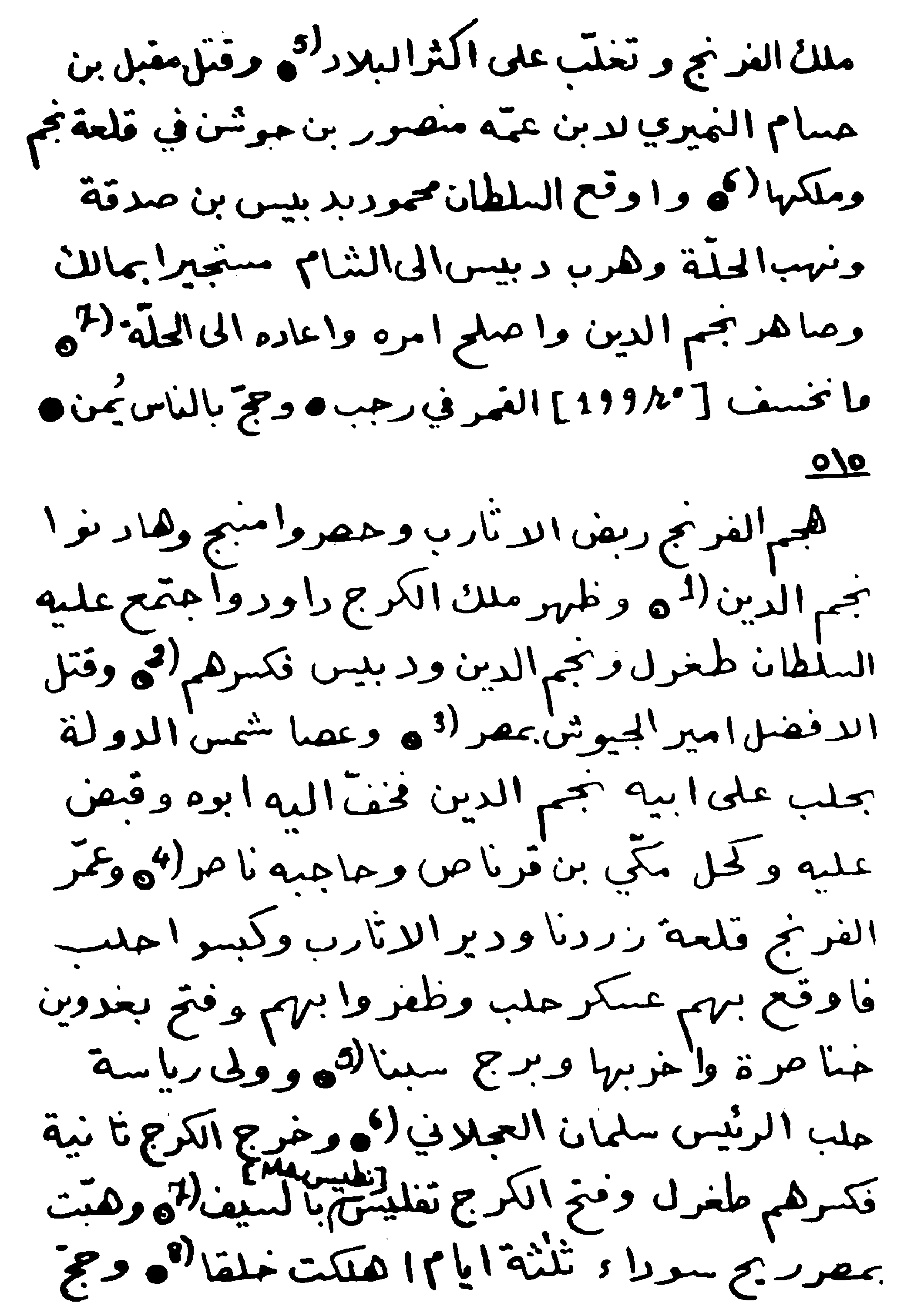 Footnotes
Footnotes
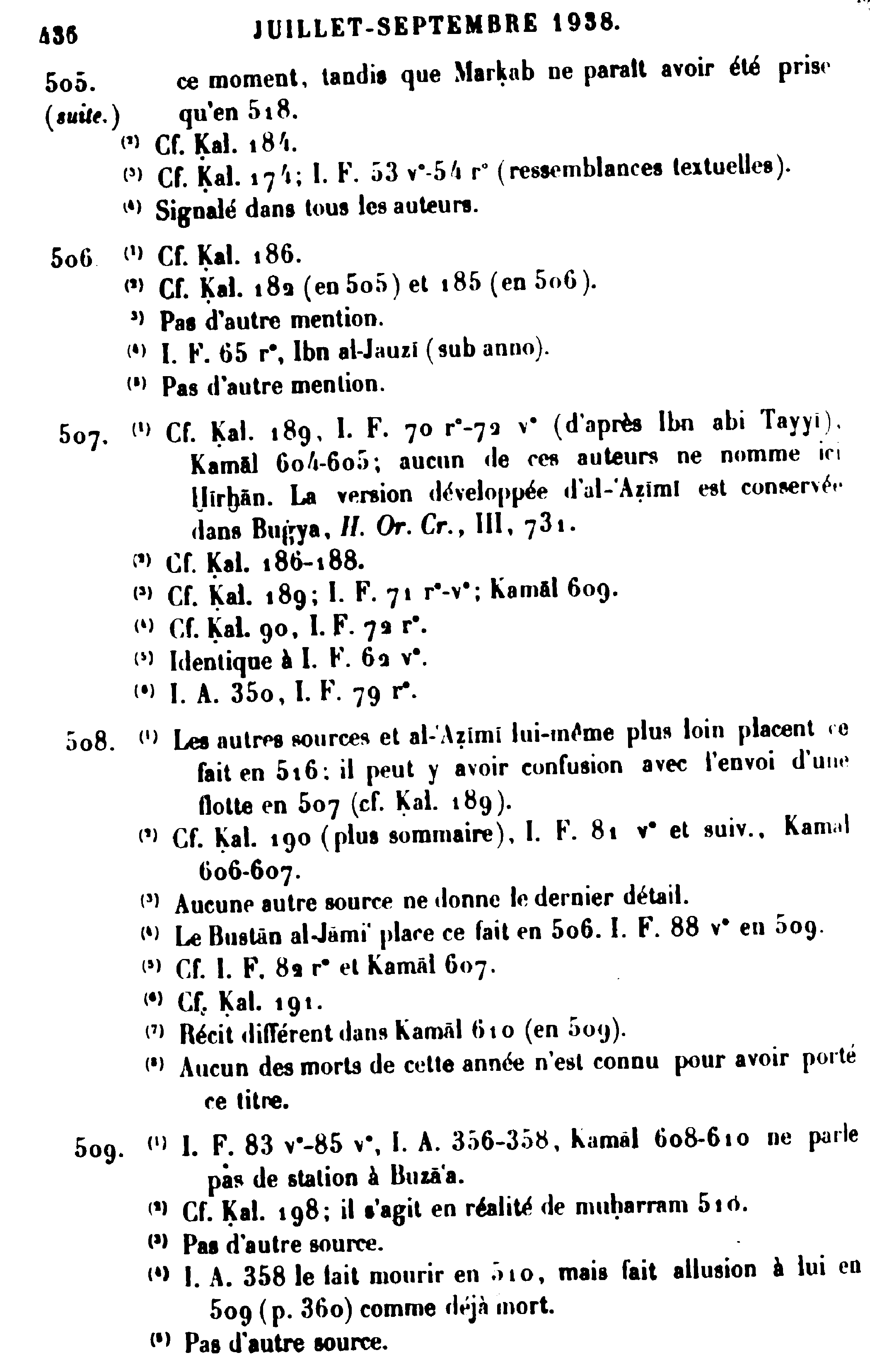
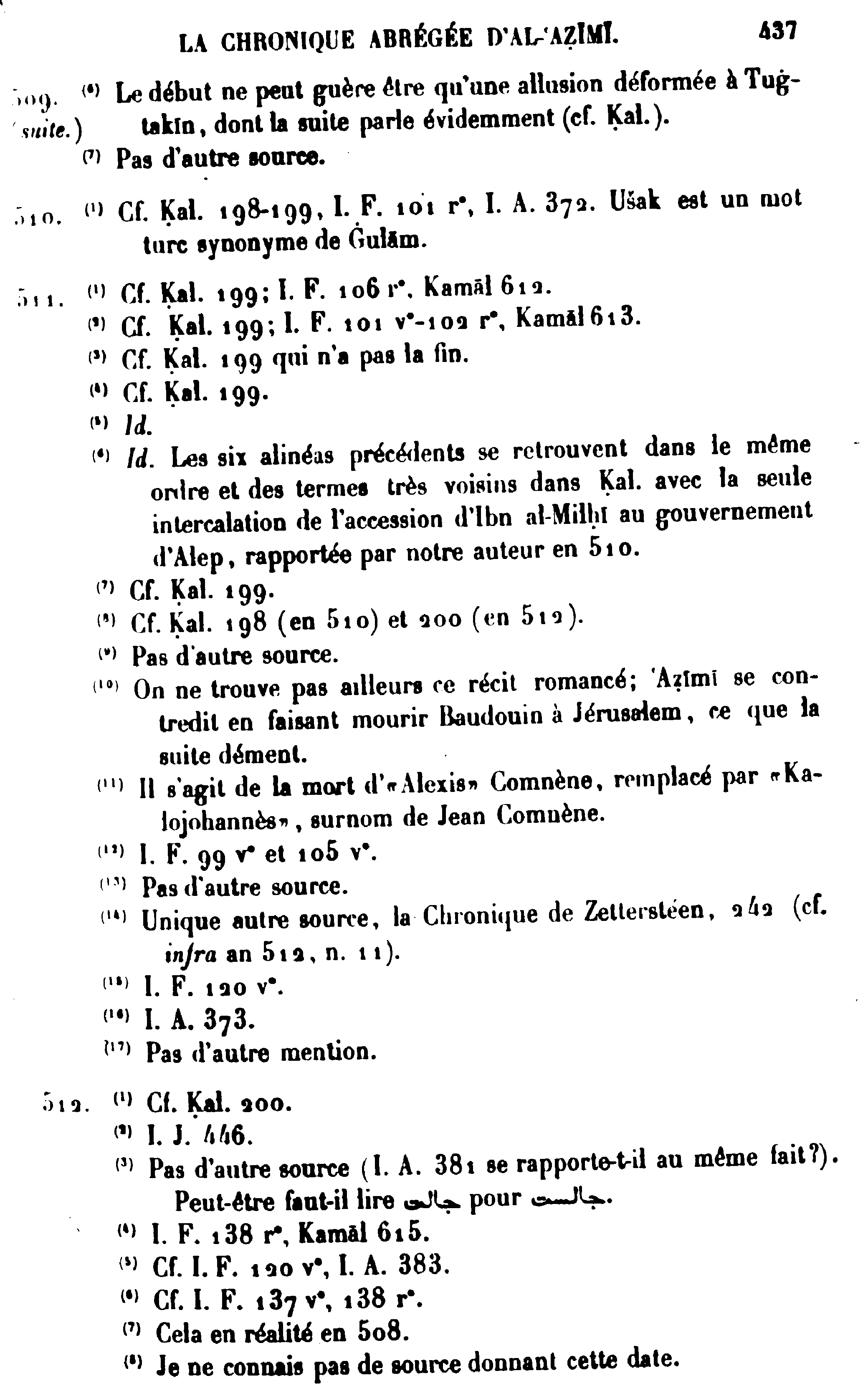
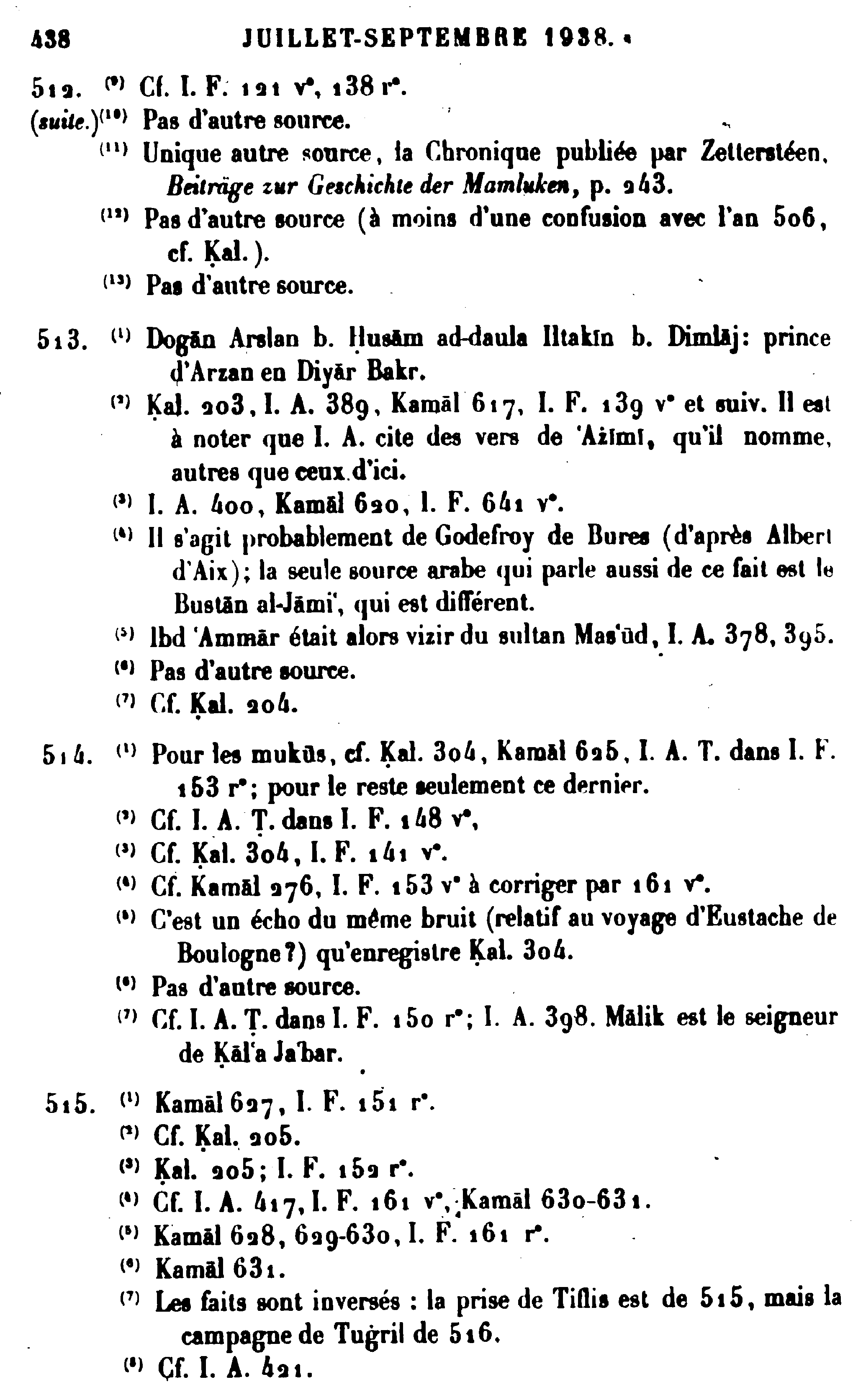
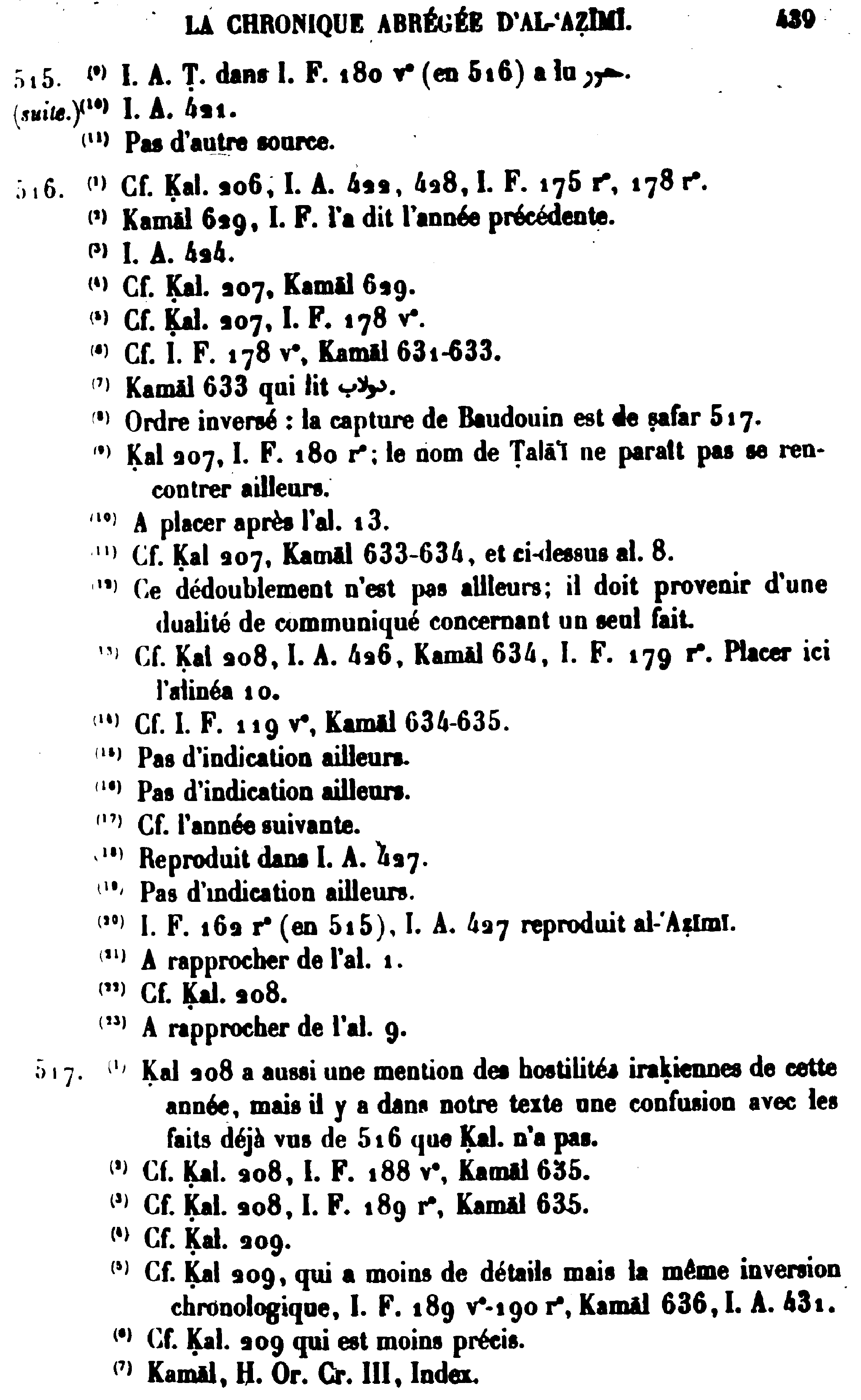 Characterization from Wikipedia
Characterization from WikipediaChronology
Year Reference Corrections Notes 7 June 1114 CE to 26 May 1115 CE A.H. 508 none
- Calculated with CHRONOS
Seismic Effects
Locations
- the Levant (Sham ?)
Sources Sources
Online Versions and Further Reading References